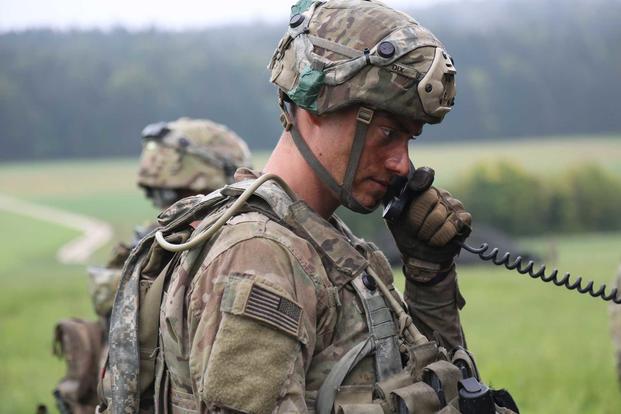There might be a way to have one member of a small unit serve as a recharger for the rest of the squad or platoon to save on batteries and lighten loads, according to two co-founders of a tech firm.
"It could be just one soldier, and a lot of people could recharge off him," Veronika Stelmakh, co-founder, along with Walker Chan, of Mesodyne Inc., said Tuesday in proposing their portable generator as a battery-load solution at the annual meeting and exposition of the Association of the U.S. Army.
The "soldier-borne generator for reduced battery load" is about the size of a soda can, would run silently and has the potential to reduce battery loads by 75 percent, said Stelmakh and Chan, who both hold doctorates from the Massachusetts Institute of Technology.
The device, developed by MIT's Institute for Soldier Nanotechnologies, would run off fuel, most likely propane or butane, to generate electricity through a conversion process using infrared radiation to drive specialized photovoltaic cells, according to Mesodyne promotional material.
Although photovoltaic cells are part of the process, the device, which weighs about one pound, requires no sunlight, Stelmakh said.
The mini-generator has the potential to allow troops to shed 15 to 20 pounds of load for the batteries they use to power GPS and other devices, she said.
For years, the Army and the Marine Corps have sought ways to lighten the combat loads of dismounted troops, who may carry more than 100 pounds of body armor and helmets, weapons and ammunition, rations and water, communications equipment and other items.
According to an Army release, its Research, Development and Engineering Command is experimenting with wearable solar panels that could recharge batteries and allow soldiers to carry fewer of them.
The command is also looking at rigging a backpack frame with devices to generate electricity from the soldier's movements while marching.
Military.com's Matthew Cox reported earlier this week that the Army has started fielding its new Modular Scalable Vest, which weighs approximately 25 pounds, about five pounds lighter than the outdated Improved Outer Tactical Vest.
Battery weight was a particular concern of Gen. Martin Dempsey when he was Army chief of staff and later chairman of the Joint Chiefs of Staff, but he had little success in coming up with a solution before he retired in 2015.
At one point, Dempsey suggested the possibility of having robots carry batteries into the field to lessen the load for troops.
At a Senate hearing in 2011, when Dempsey was Army chief of staff, Sen. Daniel Inouye, D-Hawaii, commiserated with him on musculoskeletal injuries suffered by troops that forced them from the field in Iraq and Afghanistan.
Dempsey said one of the problems was the overall fitness of the troops, "but it's exacerbated by the load we ask them to bear."
Inouye, who lost an arm and earned the Medal of Honor while in combat with the legendary, all Japanese-American "Go For Broke" 442nd Regimental Combat Team in Italy in World War II, described his own lightweight gear.
"I feel for them [the troops] because I believe my combat kit never exceeded 20 pounds, including my rifle, boots and helmet, grenades and all the ammo I carried," he said.
-- Richard Sisk can be reached at Richard.Sisk@Military.com.










